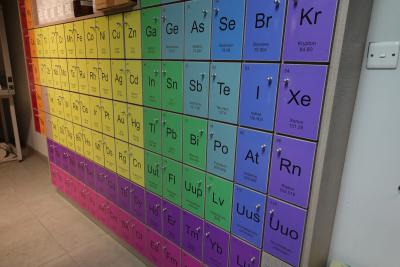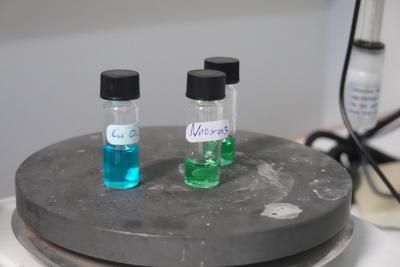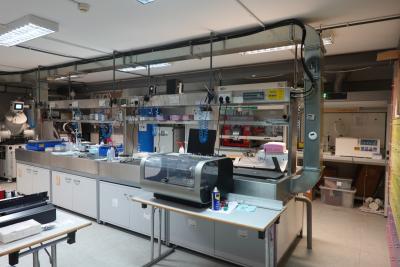In October 2021, The Perovskite-Info team met Cyprus University of Technology's (CUT) Professor Stelios Choulis, who kindly agreed to show us around his workspace and labs and update us on his team's ongoing work.

Choulis, Professor of Material Science and Engineering at the Cyprus University of Technology, is also the founder and head of the Molecular Electronics and Photonics (MEP) Research Unit. With work in UK, Germany and the Silicon Valley (USA) under his belt, Choulis is a highly skilled and experienced researcher in the fields of both photovoltaics and OLEDs. He also participated and led several large-scale research programs (ERC-Consolidator Grant European Horizon project, SME-EU FP7, RIF and RPF-Cyprus, BMBF-Germany, DOE-USA).
During our meeting, it became quite clear that Professor Choulis has a very pragmatic and practical approach to address product development challenges of next generation PVs. He aims to solve research and development problems hindering commercialization and help get Organic Photovoltaics (OPVs) and Perovskite Solar Cells (PSCs) on the market, as quickly as possible. This approach seems to work well - his research team work on inkjet printed Cu grid-based OPVs shows great promise for lower-cost and scalable performance OPVs, as do his interfaces and additives engineering methods towards long-lived OPVs.

Choulis and his research team are currently partner's in RoLA-FLEX, an industrial based EU-HORIZON funded project that address research on laser printed OPV electrodes. The MEP research team at CUT in collaboration with the National Technical University of Athens (NTUA) and pvnanocell (PVN), have developed highly efficient Indium Tin Oxide-Free OPVs using Laser Induced Forward Transfer Metal Nanoparticle Grids.
His perovskite photovoltaics related research is focused on optimizing interfaces to improve the lifetime performance of the cells, a main concern towards commercialization.

In one interesting research approach, Prof. Choulis' lab has shown that the use of a γ-Fe2O3 interfacial layer within the top electrode in an inverted PSC structure, reduces charge traps interfacial densities and so improves the stability of the cells.
In another research and development approach, Choulis and his research team have used a fullerene-based diffusion blocking layer to improve the heat lifetime performance of the inverted perovskite PVs.
The MEP research team also developed a range of metal oxide hole transporting layers (HTLs), that provide hysteresis free inverted perovskite solar cells with PCEs in the range of 20% and proposed a β-alanine surface treatment process on HTLs that resolved some of the major PSCs bottom electrode degradation mechanisms.

Prof. Choulis spends his time teaching and doing research in his Cyprus lab, and he is also actively looking for new collaborations with companies and research institutes all over the world, to help bring perovskite solar panels and OPVs to the market. Sunny Cyprus is a natural fit for solar photovoltaics research and development, the MEP research team at CUT could further benefit from additional collaborations with other complementary research/academic institutes, electronic materials providers and PV module producers companies.
On a personal note, we had enjoyed our meeting and lab visit, and we were very impressed with his capabilities and work - if anyone is interested in learning more and connecting with Prof. Choulis, let us know and we'll be happy to assist.



